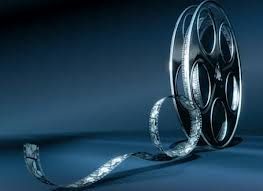Post-Traumatic Stress Disorder
Cinematherapy: A Useful Tool in Group Therapy
a description of what cinematherapy actually looks like in action
Posted February 27, 2013

Let’s start at the beginning - what is cinematherapy. Well, it’s pretty much what you’d imagine it to be; technically, it’s the process or practice of therapists instructing their clients to watch film(s) that are relevant to issues of personal distress and dysfunction, and provide some sort of pathway toward advancing therapeutic gain. That last part about “therapeutic gain” is the most important part of that statement, and also the vaguest, so I’ll add that “therapeutic gain” could mean:
-aiding a consumer of mental health services in learning more about himself and his maladaptive pattern of handling emotions and relationships (i.e. watching the protagonist in ‘Young Adult’ implode all over her social support network and realizing that you too do the same thing, which could lead to a sense of accountability in one’s social life, which could lead to entrance into therapy or some other means of further exploration),
-offering pragmatic tools for adaptively coping with stress and adversity (i.e. watching the protagonist from “Bridesmaids” feel better about herself after some engaged baking, which teaches the behavioral-activation lesson that identification of and engagement in positive events improves well-being)
-or even offering profound emotional experiences and opportunities for deeper social connections (i.e. will provide an anecdote below involving the movie “The Messenger” and the issue of normalization of PTSD symptoms).
Let’s assume the full gamut of gains are plausible until proven otherwise, after all, movies are simply narratives about how to live life and, more often than not, movies provide explicit and sub-textual lessons about living a healthier, worthier life.
Having applied this concept of cinematherapy to a group format I’d like to first note a few subtle benefits that immediate became clear in this specific context. In my mind, we’re all on a spectrum of healthy living. We all have strengths and weaknesses related to our performances in the many domains of life; we all have aspects of self that are painful; we all have habits that are dysfunctional; and, of course, we all must deal with stress and adversity that threatens to derail our pursuit of happiness.
In other words, we could all use a little therapy sometimes (if that’s not a song lyric, it should be).
A big problem in the field, however, is stigma. Even if we could all use a tune-up (or, in some cases, an over-haul), there are many internal barriers standing in the way - namely, stigmatizing or scary assumptions that we might hold about the process, such as, “Therapy is for crazy people, and I’m not crazy!” or “Therapy may open up a metaphorical can of worms that I didn’t even know was there, and then I’ll really be screwed!” What I’ve come to suspect is that a large percentage of potentially deserving and productive clients never engage in therapy for such reasons (among many others), and joining a cinematherapy group, can be a toe-in-the-water experience. Just as a psychologist who proactively enters a Primary Care unit to identify a distressed client may reach more folks than a psychologist who waits for a client to walk his distressed butt through the door of a mental health clinic, a cinematherapy group may wrap its warm, therapeutic embrace around a wider section of the population versus a more traditional therapy service. As will hopefully become clear, this de-stigmatizing ‘marketing’ facet of cinematherapy is just one of many ways in which cinema functions to facilitate the consumption of mental health services.
I now wish to discuss cinematherapy as a group modality, which, of course, involves linking cinema not just to the ways in which therapeutic value can be injected, but also the ways in which benefits to group functioning can be attained. I’ll start with the latter.
One potential benefit of group therapy is the achievement of group cohesion. Informally, I’d like to define cohesion as the process by which a group of strangers come together to bond in a manner that produces comfort, good will and trust; so much so that that the strangers (who might now deserve to be called members) begin to open up and allow for just a smidge of vulnerability ; so much so that the members begin to articulate and increasingly clarify their unique and current problems and goals in life (if you’ve ever been stuck on a problem and then decided to present it to a group of people you’d be surprised at how quickly you find yourself generating and considering new solutions. The power of an expecting group can do that). And once this step in the cohesion process unfolds, it’s increasing possible to engage in the kind of spontaneous, focused and thoughtful action/dialogue that can double as a practice ground for social-emotional-psychological skills.
I dare to suggest that this cohesion process can be facilitated, at least minimally, by the idea that all members enter into the group aware of each other’s fondness for film. I’d further dare to suggest that that the anxiety-provoking process of becoming more vulnerable and, in turn, more intimate with each other is cushioned just a bit by the opportunity for members to communicate with each other through film. For instance, when a cinematherapy group watches a film clip of a mother and daughter embroiled in heated conflict because the daughter wants to leave the nest for college and the mother’s got a bad case of anticipatory empty-nest syndrome, and a group member subsequently makes comments to the group that suggest an identification with the daughter (i.e. I was rooting for the daughter in that fight!), then that group member is perhaps indirectly communicating to others that he knows what it’s like to grow up with a controlling parent. This is not an easy thing to say, but it’s an important thing to say because such familial dynamics can produce long-term negative effects (a controlling mother can unintentionally produce a son who then becomes extra-sensitive to feeling ‘suffocated’ in his current romantic relationship) , and you can’t change the pattern until you’ve identified and articulated it.
On the heels of this idea that movies can facilitate group cohesion through indirect communication, I’d like to take a closer look at the direct therapeutic effects of film. Specifically, I want to argue that film can be a very effective tool in circumnavigating psychological defenses and encouraging previously suppressed emotions (helping people to feel things that are important to feel and to think about things that are painful but worth thinking about).
Normalization of clinical symptoms is one of many examples of therapeutic value.
Imagine for a moment that you suffer from PTSD, which is to say you suffered a traumatic event (in which you felt a sense of horror, impending death, etc.) and in the aftermath you now suffer an ongoing and nasty constellation of symptoms (mental re-experiences, avoidances and emotional arousal all related to the trauma story). Getting to a metaphorical place in which the symptoms no longer disrupt your life involves attaining an attitude that the trauma ‘symptoms’ are understandable, predictable, and reducible with effort. Successful treatment involves a shift from being angry, confused and non-accepting about having PTSD to responding in the moment to the emergence of symptoms with acceptance, compassion and understanding. A flashback can’t become a flashback if you recognize and embrace your mind’s production of it. This is what is meant by normalization of symptoms. Often, interventions aimed at normalizing symptoms are utilized when a therapist turns to you and says, “So, last night, when you were walking home from the store and heard that car backfire, which made you feel scared and got you thinking about that time you were shot at…that was simply a symptom of a mental disorder, a faulty threat detector in your brain. That wasn’t you going crazy, and it certainly wasn’t you actually getting shot at. It was just a memory that could never physically threaten you. Granted, it’s as vivid and emotionally painful a memory as can be experienced, but ultimately it’s nothing more than a mental product, a fleeting trick your mind is playing on you.” Now, providing some soothing reminders and sympathetic appraisals about the experience of a flashback can be helpful, but how much of an attitudinal shift is going to come from such an impersonal testimony, especially a testimony from someone who has never actually experienced a flashback? Now imagine that you sit down and you watch “The Messenger.” “The Messenger” is an emotionally unflinching tale of a relatable and seemingly high-functioning soldier who wrestles with PTSD after a combat-related trauma. As such, there’s a scene where he exhibits the moment by moment agony of a flashback. Imagine that you, as a sufferer of PTSD, actually have a very limited experience of flashbacks. Up until this moment you’ve either personally experienced a flashback (and you’re likely not operating at peak wherewithal during the experience), or have had the clinical definition of a flashback explained to you in a therapy office. The point is that going into the movie experience your flashbacks may not be feeling particularly ‘normal.’ But now you’re watching an on-screen image of someone you don’t know, and he’s having a flashback. Just the idea of watching another human being experience a flashback is pretty unique if you think about it. It’s not as though people with PTSD go around publicizing and safely presenting their symptoms in action. And that’s the first benefit of movies that I noticed in this regard; it creates a vivid, memorable experience of being exposed to a flashback in action (much more so than a clinician dryly reading from the DSM-V).
The second benefit of normalization via cinema was the inherent sense of safety induced by an awareness that the character isn’t in the room with you; he isn’t even located in reality. You can watch the activity of a flashback unfold and feel as comfortable as one can possibly feel while tuning in to such subject matter.
And this leads to a third benefit - education. It can be uniquely educational to learn about psychiatric symptoms like a PTSD flashback through film, because not only do you know with a sense of certainty that what you’re observing is, in fact, a flashback and not something else (because your cinematherapy group leader has said as much), but you can also learn things about a flashback experience that didn’t come up in your clinical conversations. Watching “The Messenger” scene shows the character’s experience of fundamental features of the flashback, like physiological distress (i.e. the sweating, the rapid heart rate, the hyperventilating), but it also shows other valuable, and more subtle processes, such as the intense way in which the character’s attention goes inward, and the scene displays the missed opportunities for the protagonist to get re-grounded in the present-moment, and it even shows things like the sense of shock on the faces of all those in close physical proximity to the character (this is important social feedback that, if noticed, not only disconfirms the sense of threat exuded by the flashback but also creates a compassionate awareness for the ways in which friends/family members of those with PTSD can be negatively impacted by the symptoms as well).
A fourth benefit is emotionally-based; seeing the symptoms in action produces a gut-level reaction that helps one to truly feel what has been intellectually understood for a while: “Wow, other people actually get this PTSD thing too!”
And a final normalizing impact of such a cinematic clip is that it can trigger a composed, focused and genuine discussion on a group-level. My sense is that such film clips can sufficiently set the stage for a diffusion of the emotional charge of what is otherwise a very scary topic of conversation to approach, especially in group settings. The clip provides just enough of an opening for the group to openly explore what would normally be avoided at all costs, and the power of the social connection and the presence of a variety of perspectives can very much facilitate (I would hypothesize) the attitudinal shift I described earlier.




